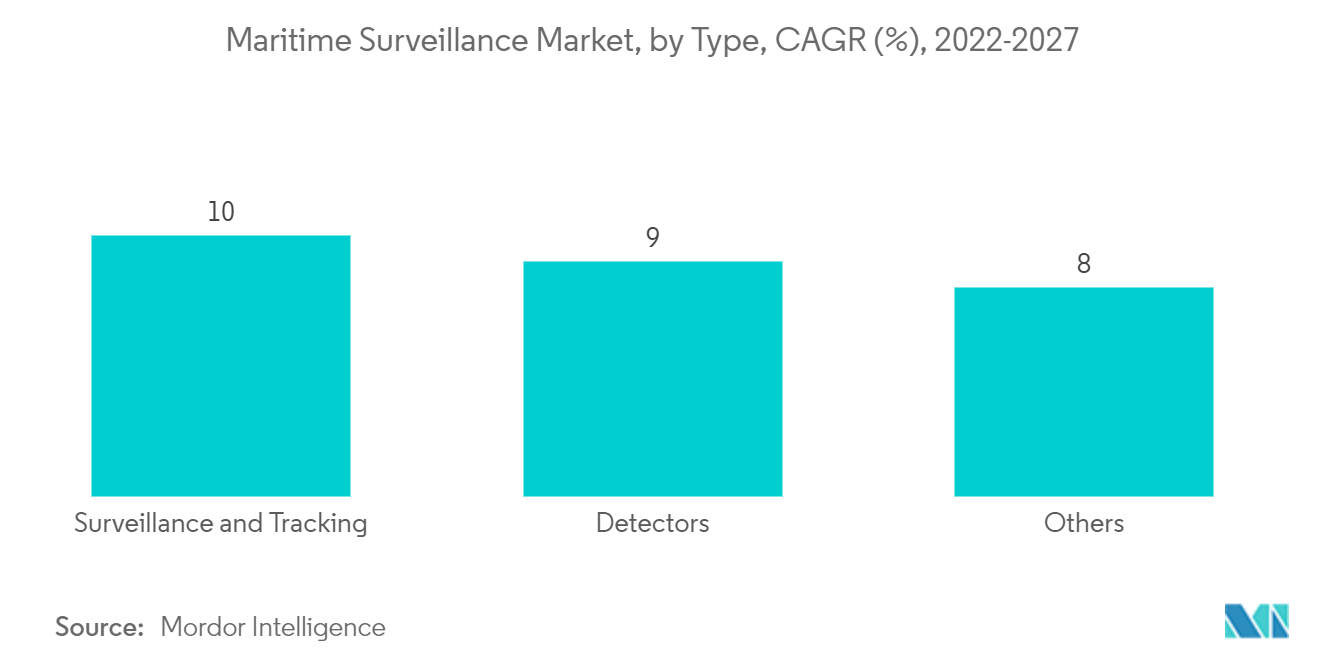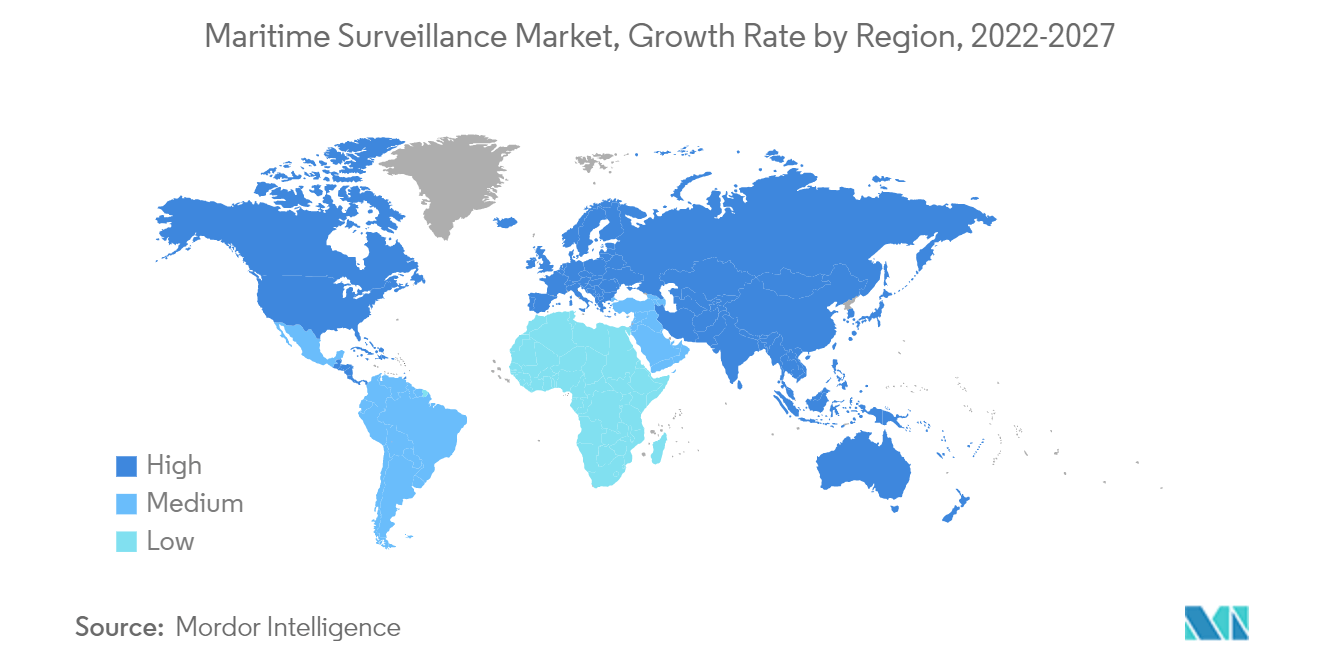Market Trends of Maritime Surveillance Industry
This section covers the major market trends shaping the Maritime Surveillance Market according to our research experts:
Surveillance and Tracking Segment is Expected to Witness Significant Growth During the Forecast Period
The surveillance and tracking segment is expected to witness significant growth during the forecast period owing to various tracking software to monitor the location and give necessary alerts to protect vessels, ports, and other shipping infrastructure.
The rising number of maritime threats, including piracy, has led various nations worldwide to upgrade their technologies regarding maritime surveillance and tracking capabilities. Surveillance in a maritime environment is indispensable in fighting against a wide range of criminal activities, including pirate attacks and unlicensed fishing trailers. Various systems such as computer vision can be a helpful aid in the law enforcement process, for example, tracking and identifying moving vessels on the ocean. A robust maritime system also needs to differentiate between artificial structures on the sea and animal life. It also needs to be capable of tracking multiple targets through various occlusions. All of these requirements influence the choice of surveillance methodology.
In addition, with the rising need for maritime security at ports and in coastal areas, in areas such as Russia, LATAM, and the Caribbean, where the occurrence of piracy attacks and robberies has surged rapidly over the past few years, the requirement for these devices is projected to be significant. Various nations in the North American and the European region are now adopting cutting-edge maritime security technologies using a wide range of cameras, including infrared, fisheye, and pan-tilt-zoom (PTZ) cameras. Thus, such advancements will lead to growth in the market during the forecast period.

Asia-Pacific is Expected to Witness Significant Growth During the Forecast Period
The Asia-Pacific region is expected to witness significant growth during the forecast period. The key driving factor behind this growth is an increasing need to detect maritime hazards and ensure communication with all the available officials across the maritime sector with advanced software.
For the past few years, China has not been an active player in maritime security; on the other hand, in 2021, China used civilian vessels to carry out maritime surveillance operations. With the creation of the "Spratly Backbone Fleet" program by the Chinese government, China is increasing the number of vessels being used for maritime surveillance activities, with about 300 to 400 vessels being deployed at any given time. In addition to about 800 to 1,000 commercial fishing boats in the Spratly fleet, China has approximately 200 other vessels as part of a professional maritime militia. Moreover, China has been increasing its submarine deterrent patrols to ensure they can map the underwater terrain and carry out surveillance activities. In addition, Japan is also investing in enhancing its maritime capabilities, and it plans to acquire and realign intelligence, surveillance tracking, and reconnaissance (ISR) assets to sensitive areas, upgrade naval patrol craft, ground force radars, and missile units, and develop amphibious assault capability within a joint JSDF task force. Thus, such developments will lead to significant growth in the maritime surveillance market in Asia-Pacific during the forecast period.


